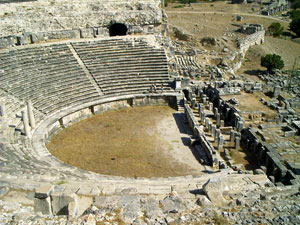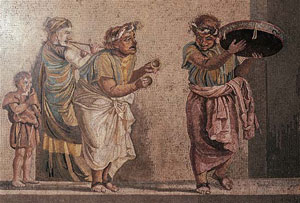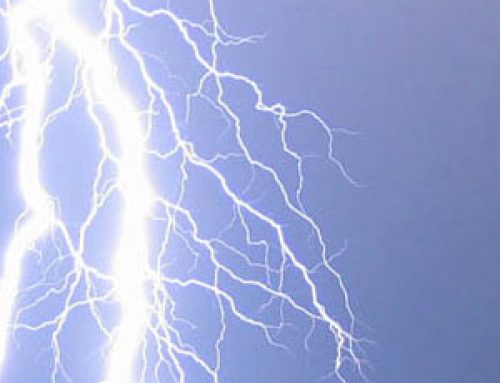
Greek theater at Epidauros – Reading a Greek play
How did Greek plays get started?
One great activity to understand ancient Greece better is to stage a scene from a Greek play The first Greek plays grew out of choir performances, starting around 600 BC. First, the choirmaster began facing the choir and singing a few lines, and then the choir would respond. In this way, you could tell a short story.
Greek music
Greek theaters
Aeschylus, a Greek playwright
Greek literature
All our ancient Greece articles
Then the choirmaster was joined by the assistant choir-master, and the two of them spoke to each other, as well as to the choir. With these two actors you could tell a story with a more complicated plot.
Two or three speaking parts?
By about 525 BC, somebody had the idea that each of the actors could play several different roles by going offstage and changing costumes. Most Greek plays have only two speaking actors onstage at any one time, plus the choir and a few extras who don’t speak. When there are more speaking parts, they’re all played by the same two actors, who go offstage and change costumes. A few later plays (after about 475 BC) have three speaking actors; no Greek play has more than that.

Theater of Miletus
A project for students
So what might be interesting would be to pick a few scenes from a Greek play to act, but try to use only two speaking actors, plus the choir and non-speaking extras. Let the kids figure out how that would be managed – who has to play which parts? How do they change their costume so they can play somebody else?
Why are Greek plays like this?
Why did the Greeks live with such restrictions on their plays? And why didn’t they experiment more? Because the plays were presented as part of a competition, and so they had to obey the rules of the competition, or be disqualified.
Competition in ancient Greece
Perhaps you, too could have a competition between different plays, and have judges or a vote decide which one was best?
Which plays should we try?
One good one to try might be Euripides’ The Trojan Women, about the fall of Troy after the Trojan War. Then the kids could learn about the Trojan War at the same time. Another good choice is Aeschylus’ Agamemnon – the first play to have three speaking actors.
The Trojan Women
Who was Euripides?
Agamemnon

Street musicians (Pompeii, before 79 AD)
Activities:
Olympic games
Play reading
Vase-painting
Make a mosaic
Bibliography and ideas for Ancient Greek projects:
Hands-On Ancient People, Volume 2 : Art Activities about Minoans, Mycenaeans, Trojans, Ancient Greeks, Etruscans, and Romans (2004) For kids ages 9-12.
Ancient Greece!: 40 Hands-On Activities to Experience This Wondrous Age (Kaleidoscope Kids), by Avery Hart, Paul Mantell, and Michael P. Kline (1999). Gives ideas to get kids thinking, rather than step-by-step instructions.




